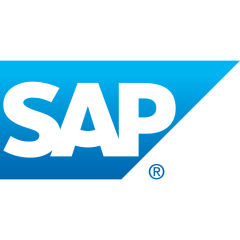What is our primary use case?
Our primary use cases involve data insights. We gather data from various sources, including SAP and non-SAP systems, and use SAP Analytics Cloud to generate reports.
We also leverage DataSphere* to connect to systems that don't have direct connectors within SAP Analytics Cloud, bringing that data into the platform.
How has it helped my organization?
It helps with planning and forecasting capabilities.
So planning and forecasting are specifically useful for companies that need to see their potential load for next month's production and what procurement they should be planning for. We consider both factors in this process.
So, in the first case, you're planning for plant utilization. Maybe your plant is equipped to manufacture 1000 pieces per month, let's say bikes, but your sales are roughly 800. Then there's no need to run at full load.
However, on the other hand, if you're manufacturing a thousand 1000 pieces or bikes per month but have 1200 or 1100 orders, you can think of how best to utilize your capacity to increase production from 1000 to at least 1010.
Forecasting is actually dependent on that. Without forecasting, effective planning isn't possible.
What is most valuable?
Some beneficial features include data adaptation or massaging capabilities – the platform makes that simple.
The user interface (UI) is also quite intuitive and straightforward.
Visualization is quite seamless and awesome. Once the data messaging is set up, it's straightforward and simple to select how it should be displayed. So, that's another advantage of SAP.
Predictive analytics capabilities are also good. It has positively impacted decision-making. Recently, we did predictive analysis for a Middle East client. We worked with their OT systems.
So, for OT systems, the client needed to plan for predictive maintenance. They have a heavy manufacturing focus and wanted to accumulate data and get strong insights.
They had various data sources – your furnace has some data, your chiller has different data, and it's all local to those systems. The challenge is getting everything centralized for insights. We leveraged SAP for this, and it was very beneficial because they're primarily an SAP client, meaning they use SAP ERP.
So it's easy to pull data from OT systems and SAP. Having the Cloud component is also helpful, as they can look at and change reports at runtime. They were able to get insights five levels deep.
Most often integration is there, but in cases where adapters or connectors are not available, we have to opt for DataSphere to bring data into the landscape, and then it allows connection. For the majority of cases, it works well, especially because the integration suite is helpful.
What needs improvement?
Challenge:
There are challenges, such as initial connection times when direct connectors aren't available.
For example, the initial connection can take a long time when direct connectors are not available. In these cases, you have to use a tool like DataSphere, and then you can connect.
But that's beyond their control; it's not really their limitation. It's like if you haven't opened your door, and we want to enter your house, we have to find another way in.
Area of improvement:
One potential improvement is how we can transpose data. With SAP, if you have data from one system with a declared data type and a different system with another data type, the transfer is tricky.
Currently, they allow us to fix the data type, and then we work with that. But sometimes, it would be easier if we could declare a data type dynamically.
The way we do it now is to manipulate text into text, make some assumptions, and then get the data. This can sometimes lead to errors. So, data transportation could be handled better.
For how long have I used the solution?
I've been working with SAP Analytics Cloud for three years.
What do I think about the stability of the solution?
SAP Analytics Cloud is mostly stable. However, customers have reported some issues. While the product itself is stable, if users can't easily leverage it, that's a problem.
For example, the logs show the overall health of the cloud services, but it's difficult to get granular insights. If I want to see how much bandwidth a specific service is using, or how much data is routed through it, that information isn't readily available.
So, technically stable, but some improvements are needed in terms of user experience.
What do I think about the scalability of the solution?
It's quite scalable. SAP provides the ability to connect even when there isn't native connectivity, demonstrating their focus on scalability.
If your data volume increases in the future, scaling up is easy and doesn't require excessive effort.
How are customer service and support?
It seems like SAP's support team is still getting up to speed on this product. They probably have to reach out internally to find the right experts. While they respond with 'We'll look into it,' the follow-through can take a while.
If you call SAP support with a question they don't immediately know the answer to, they'll take notes and connect you with the right person. That part is good.
The first-level support person does the right thing. But, the expectation is a quicker follow-up within maybe 24 hours, and that's not always happening. They take some sweet time to give a response.
How would you rate customer service and support?
Which solution did I use previously and why did I switch?
We often use alternatives. This can be due to customer preference or because they offer better flexibility and pricing. For example, Power BI on Azure is a common choice.
There are other differences, but primarily, it comes down to flexibility and pricing.
How was the initial setup?
Complexity arises when you need to connect with systems that don't have standard connectors. Otherwise, it's straightforward and simple.
It's those cases where DataSphere comes into play that introduce complexity.
What about the implementation team?
For deployment, one person is needed to understand the landscape and translate it into the 'to be' system, and another person for actual migration. You also need someone from infrastructure. So, around three people on the technical side, or maybe five if you include project managers.
For maintenance, three people are required. One from infrastructure, another from technology, and one for coordination or from an architect's perspective. These people might be working at a maximum of 10% capacity on this project, as their responsibilities could be spread across multiple projects.
What's my experience with pricing, setup cost, and licensing?
SAP Analytics Cloud is a bit higher [in price]. Because, if Microsoft can afford a better product and lower cost, SAP can afford at least the same, or even lower.
At least it should be competitive. If Azure or Google can provide an alternative, so can SAP.
If SAP is claiming a premium, it really needs to be seen as such. When comparing, say, burger A from one place to burger B from another, you have to show why you are charging a premium. For example, if burger A is $1.40, why should I pay $5 for burger B when it is available at a lower cost?"
Otherwise, people will compare the prices directly, wondering why they should pay more for something that's available at a lower cost elsewhere.
Either show the correct value proposition or else adjust to the same level.
What other advice do I have?
Overall, I would rate the solution a seven out of ten. I recommend using this solution because we are SAP shop.
But at the same time, on the ground, we are aware that clients nowadays are not dependent just on us. "Us" as in us being the consultants. So, they also do some prep work. They also reach out to some consultants, like us. They consult a minimum of three or up to eight to ten consultants each hour before they say yes to us.
So, at that point, they are already aware of what the potential alternatives could be. Though we are recommending SAP Analytics Cloud, they already have insight about the possibilities in the market. So, it's not always easy for us to convince them to opt for SAP Analytics Cloud either.
Disclosure: My company has a business relationship with this vendor other than being a customer: Partner























